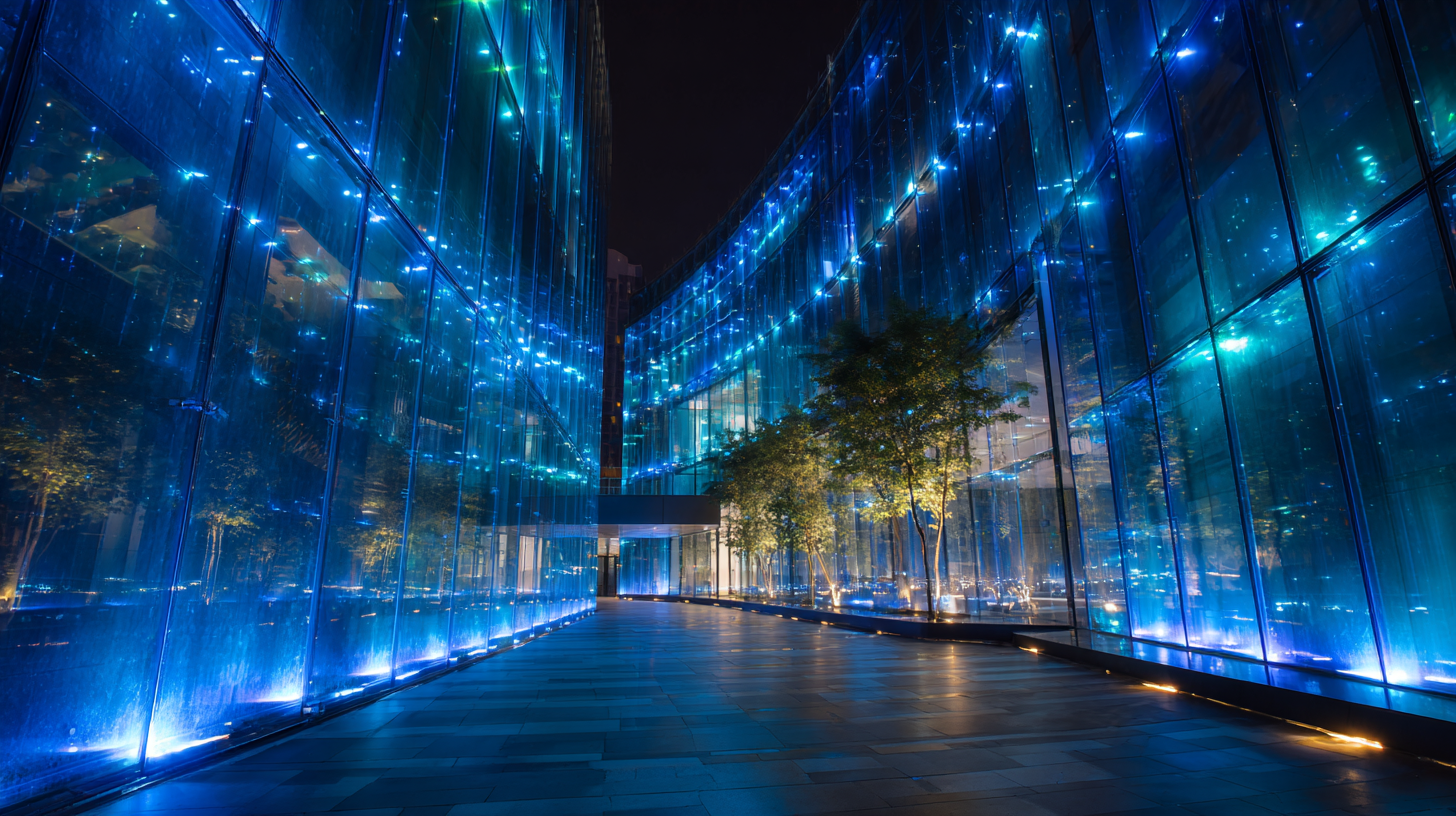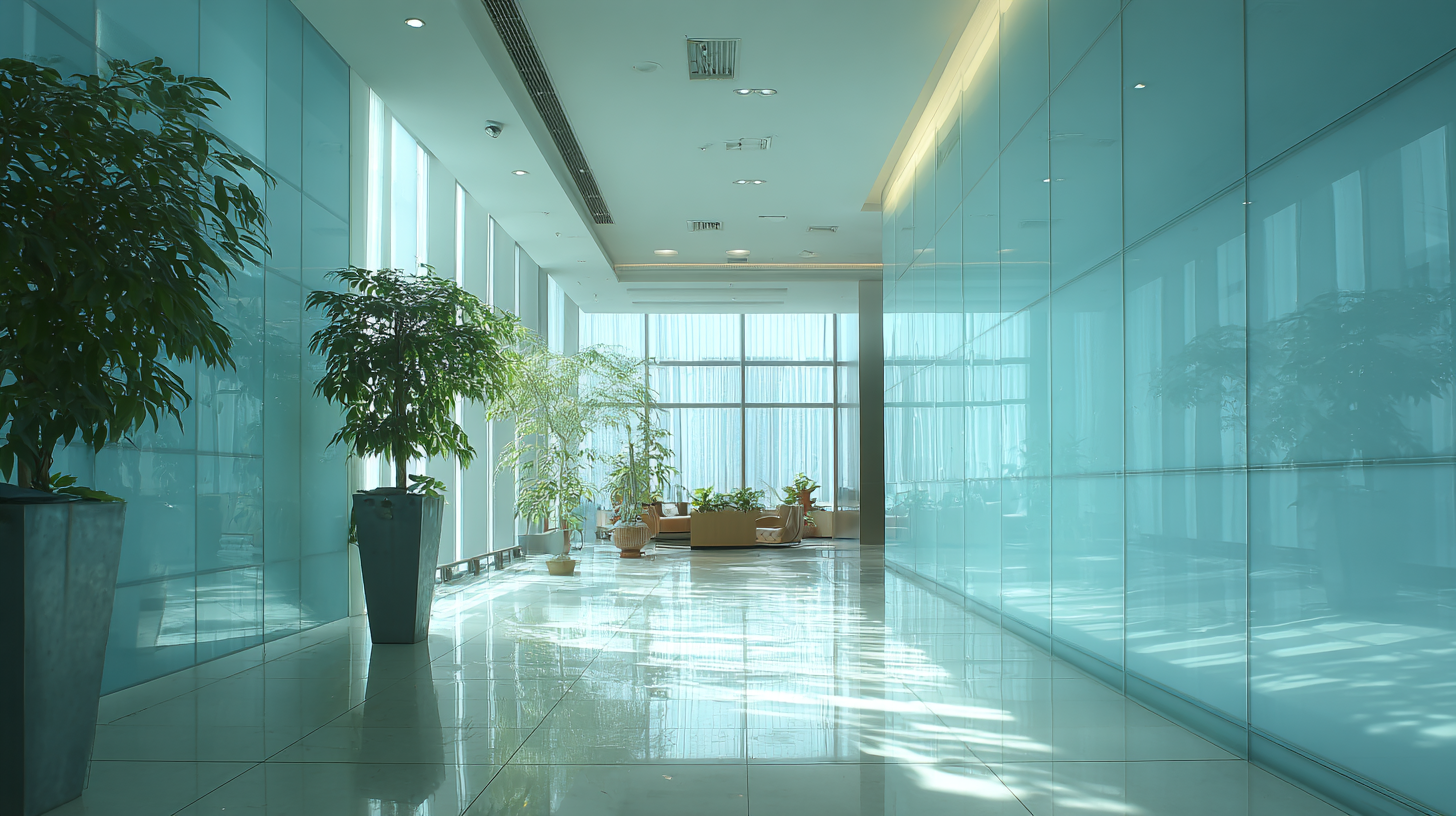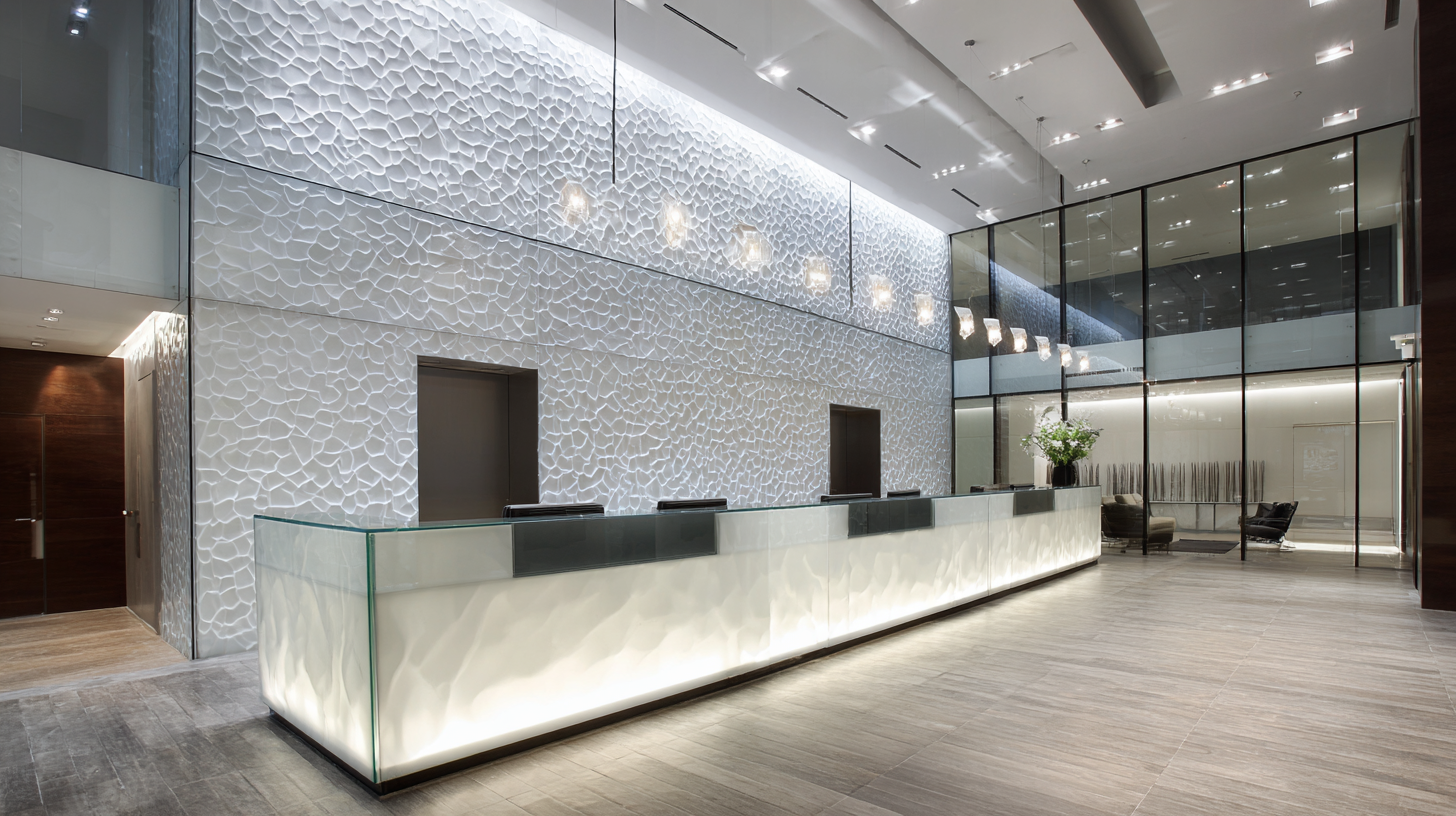
In recent years, the demand for energy-efficient lighting solutions has surged, driven by a growing awareness of environmental sustainability and the need to reduce energy consumption. According to a report from the U.S. Department of Energy, lighting accounts for nearly 10% of total energy use in residential and commercial buildings, emphasizing the urgent need for innovative solutions. One transformative product in this category is the Wall Washer Glass, which not only enhances aesthetic appeal but also optimizes energy efficiency. By providing uniform light distribution and minimizing wasted light, Wall Washer Glass can significantly reduce energy costs, with some studies indicating up to 30% savings compared to traditional fixtures. As the industry moves towards smarter lighting technologies, understanding the impact of best practices in Wall Washer Glass design and application will be crucial for architects and designers looking to create sustainable, efficient environments.

The role of glass in enhancing wall washer efficiency in modern lighting cannot be overstated. With advancements in glass technology, the optical properties of wall washers have significantly improved, leading to more efficient light distribution. According to a report from the Lighting Research Center, utilizing high-performance glass coatings can increase the transmission of light by up to 95%, thus minimizing energy loss and optimizing light output. This is particularly crucial as energy-efficient lighting solutions are essential for reducing overall power consumption in commercial and residential spaces.
Moreover, the design of wall washer fixtures benefits immensely from innovative glass materials. For instance, low-emissivity (Low-E) glass can reflect unwanted heat while allowing natural light to permeate. A study published by the International Energy Agency highlights that by integrating such glass in wall washers, energy savings can reach 25% over traditional designs. As the demand for sustainable lighting solutions rises, investing in advanced glass technologies will be pivotal in fostering a greener future while enhancing the aesthetic appeal of interior designs.
The integration of best wall washer glass in modern lighting solutions plays a significant role in promoting energy conservation practices. Studies indicate that using high-quality wall washer glass can improve the efficiency of lighting systems by enhancing light distribution while minimizing energy loss. According to a report from the International Energy Agency (IEA), optimizing lighting efficiency through advanced materials like wall washer glass can lead to energy savings of up to 30%. This is particularly crucial in commercial spaces where lighting accounts for nearly 40% of energy consumption.
Moreover, best wall washer glass is designed to reflect and diffuse light more effectively, enabling a more uniform illumination across surfaces. This not only enhances visual comfort but also reduces the need for excessive lighting fixtures, which can lead to increased energy consumption. The U.S. Department of Energy (DOE) emphasizes that switching to advanced lighting technologies, including wall washer glass, can contribute to a substantial reduction in electricity use, potentially saving businesses thousands of dollars annually. By adopting these innovative materials, organizations can align themselves with sustainability goals while significantly reducing their carbon footprint.

 The advancements in wall washer glass technology have revolutionized modern lighting solutions, significantly enhancing their energy efficiency. Innovative designs utilize specialized coatings and materials that optimize light diffusion and reduce glare, enabling a broader distribution of light across surfaces. This not only improves the aesthetic appeal of spaces but also minimizes the need for excessive lighting, which often leads to higher energy consumption. By effectively directing and enhancing the intensity of light, best wall washer glass designs can result in lower wattage requirements while maintaining the desired illumination levels.
The advancements in wall washer glass technology have revolutionized modern lighting solutions, significantly enhancing their energy efficiency. Innovative designs utilize specialized coatings and materials that optimize light diffusion and reduce glare, enabling a broader distribution of light across surfaces. This not only improves the aesthetic appeal of spaces but also minimizes the need for excessive lighting, which often leads to higher energy consumption. By effectively directing and enhancing the intensity of light, best wall washer glass designs can result in lower wattage requirements while maintaining the desired illumination levels.
Furthermore, the integration of smart technology into wall washer glass systems allows for greater control and customization of lighting. Features such as adjustable brightness and color temperature can be seamlessly incorporated, ensuring that energy use aligns closely with the specific needs of a space. This adaptability contributes to further energy savings, as users can optimize their lighting conditions throughout the day without sacrificing quality. As architectural designs continue to evolve, wall washer glass stands out not only as an aesthetic enhancement but also as a critical component in the quest for sustainable and energy-efficient lighting solutions.
When examining the energy performance of wall washers in modern lighting solutions, a stark contrast emerges between traditional and modern wall washer glass. Traditional wall washers often relied on halogen or incandescent lighting, which can consume up to 60% more energy than their modern counterparts. According to the U.S. Department of Energy, LED technology not only extends the lifespan of lighting fixtures but also reduces energy consumption by approximately 75% compared to conventional bulbs. This dramatic shift highlights the necessity for advanced materials in enhancing energy efficiency.
Modern wall washer glass, specifically designed to optimize light distribution while minimizing energy use, plays a crucial role in this evolution. Industry reports indicate that modern glass coatings can increase lumen output by 20% to 30%. In addition, the integration of smart technologies allows for adjustable brightness and motion-sensing capabilities, further enhancing energy savings. This makes modern wall washer solutions a preferable choice for sustainability-oriented architects and designers, as they navigate the ever-tightening energy efficiency regulations in building designs.
This bar chart compares the energy efficiency of traditional wall washer glass versus modern wall washer glass. Traditional wall washer glass achieves approximately 80 lumens per watt, while modern wall washer glass improves energy performance significantly, reaching about 120 lumens per watt. This demonstrates the enhanced energy efficiency provided by modern solutions in contemporary lighting designs.
The trend toward sustainable lighting solutions has prompted a closer look at the technology behind wall washer glass. Optimal wall washer glass not only enhances the aesthetic quality of lighting but also significantly contributes to energy efficiency. By effectively distributing light across surfaces, this type of glass reduces the need for multiple light sources, thereby lowering energy consumption. Its design allows for better light absorption and reflection, resulting in a more uniform illumination that can improve both functionality and ambiance in various environments.
Moreover, the sustainable benefits of using high-quality wall washer glass align with eco-friendly practices that modern consumers and businesses are increasingly prioritizing. This type of glass is often made from recyclable materials and is designed to last longer than traditional options, minimizing waste. By incorporating optimal wall washer glass into lighting systems, we can reduce our carbon footprint while enjoying enhanced lighting performance. This synergy between energy efficiency and sustainability exemplifies how innovative materials can play a crucial role in creating more environmentally friendly lighting solutions.
| Feature | Standard Wall Washer Glass | Optimal Wall Washer Glass | Energy Savings (%) | Environmental Impact |
|---|---|---|---|---|
| Light Transmission | 70% | 90% | 15% | Reduced energy consumption |
| Durability | 5 years | 10 years | N/A | Less waste generation |
| Heat Resistance | Low | High | N/A | Improved safety |
| Manufacturing Process | Conventional | Eco-friendly | N/A | Lower carbon footprint |
| Cost Efficiency | Medium | High | 20% | Long-term savings |